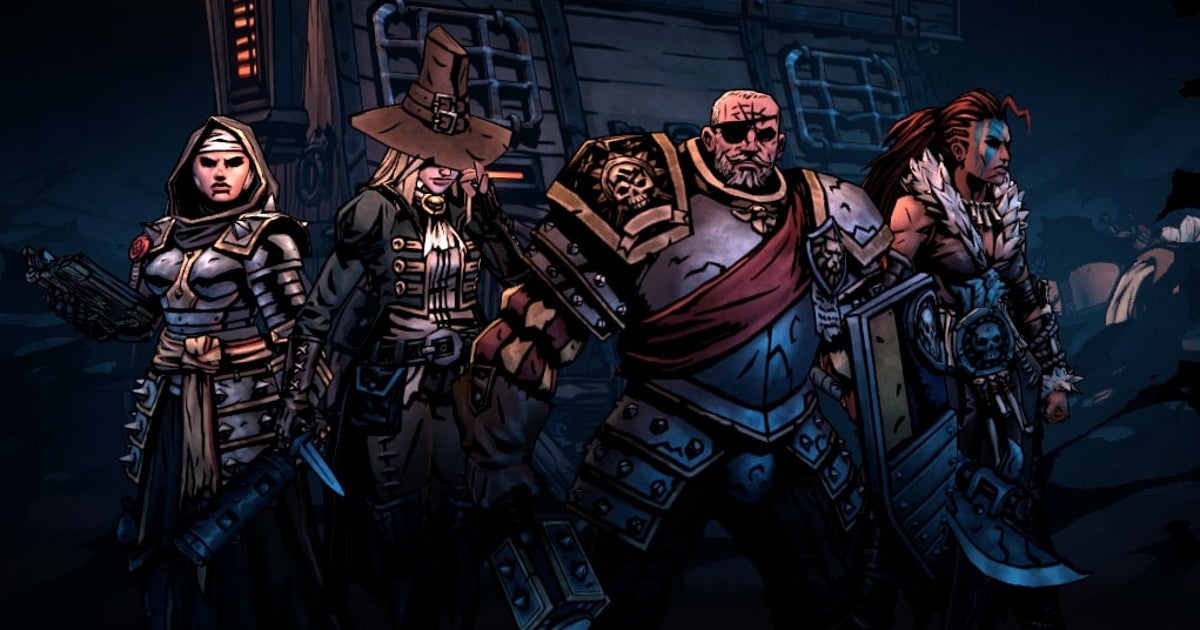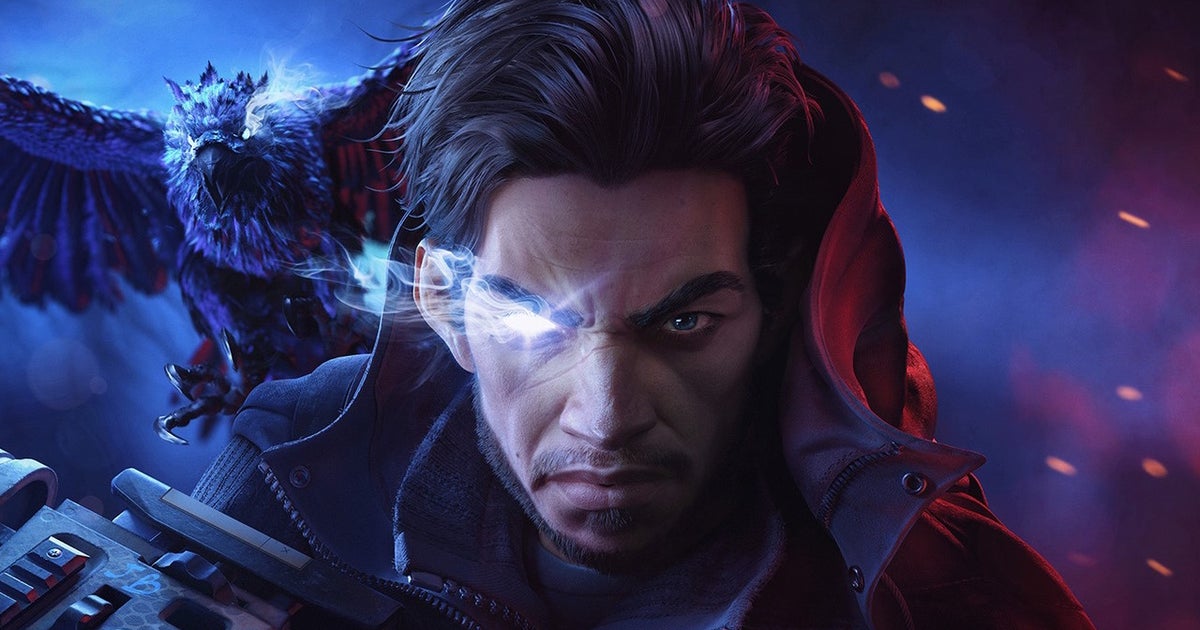"Does that pommel horse have a grenade launcher?" is one of many bizarre questions I found myself asking while playing HROT. This Slavic shooter revels in the strange, straddling the line between hyper-bleak Soviet satire and goofy memetic joke factory. This isn't the best thing about HROT, we'll get to that in a couple of paragraphs. But the balancing of these two personality strands is what defines HROT's quality. At the outset, they exist in perfect symbiosis, but the relationship becomes less stable as the game goes on.
The year is 1986, and something is seriously wrong in the Czechoslovak Socialist Republic. What that might be isn't explicitly stated, but given the year, the ambient chatter of Geiger counters, and the soldiers vomiting through their gasmasks as they prowl the abandoned streets, a nuclear disaster at an infamous Ukrainian power plant isn't a vast stretch of the imagination. In any case, anyone who wasn't killed by the fallout is now being hunted by an army of (presumably Russian, but again, it isn't explicated) soldiers. Emerging from a bomb shelter beneath Prague's Kosmonautů Metro Station (now named Háje), you take it upon yourself to defend your glorious homeland from these invaders.
Of all the retro shooters released in the last five years, HROT is the most committed to recreating the look and general vibe of early 3D action games. We've seen retro shooters built in modern engines like Unity, but none, as far as I know, in a custom engine designed specifically to look thirty years old. HROT does exactly this and does it magnificently. From its boxy buildings to its flat ashen skybox to its jittering character models that appear forged with a lump hammer, HROT looks exactly like something I would have played on my PC back in 1997 (despite it being completely age inappropriate). The simple geometry and relentlessly brown aesthetic also fits neatly with the brutalist architecture of the game's late Soviet setting.
Yet HROT's greatest strength is not its appearance, but what hides inside all its bricklike institutions. HROT's 21 levels are not the largest or most conceptually ambitious I've seen in a retro shooter, but they are the truest to the FPS' origins in RPG dungeon crawling. Almost every level is an intricate warren of corridors filled with traps, hazards, monster closets, hidden pathways, and secrets that makes moment-to-moment exploration endlessly entertaining. HROT has a particular affection for wrong-footing you with its keys and switches. Inserting a key into a lock might open the door in front of you, but it might also open up the wall to the side, or just teleport you to a new location, one usually stuffed full of foes waiting to gun you down.
.jpg?width=690&quality=80&format=jpg&auto=webp)
As with the visual presentation, HROT elegantly blends these ideas with its setting. It feels natural for an oppressive Soviet dictatorship to be riddled with unseen rooms and hidden passageways, a world where paranoia is not just in the atmosphere but in the architecture itself. In one example, you come to an austere governmental conference room centred with a large table and chairs. You press a button marked "emergency shelter", and the whole room begins to descend into the Earth. Of all the retro shooters to graduate from the John Romero school of level design, this one studied the hardest.
Although HROT's primary inspiration is Quake, there's a fair amount of Duke Nukem in here too. The early levels are riddled with interactive objects, ranging from telephones and pool tables to fully functioning piano keyboards. There's even a motorcycle that you can drive around certain levels, and the game even makes half-decent use of it in one of them. Unlike the more general level design, these elements fade considerably after the first few levels. They never completely disappear, but you can see the point at which stuffing levels full of interactive gimmicks became impractical for the developer.
"Although HROT's primary inspiration is Quake, there's a fair amount of Duke Nukem in here too"As an ode to classic FPS level design, HROT is excellent. As a shooter, it's fine, adequate, satisfactory, but not amazing. Again, HROT wears its Quake inspiration on its ragged, bloody sleeve, from its bouncy grenades that are as much of a threat to you as your enemies, to its undead foes that throw chunks of themselves at you. Movement is liberatingly frictionless, and the game provides an impressive menagerie of monsters to explode, from sickly hazmat-wearing soldiers who tote shotguns, to gasmask-wearing horses and Hind-D helicopters. Its weapon selection, on the other hand, doesn't spark much joy. The double-barrelled shotgun and grenade launcher (or "hussite hand-cannon" as the game refers to it) are both satisfying enough to propel you onwards, but every other weapon is either mediocre or outright lame. The pistol is pathetic, the submachinegun piffling, and the lightning gun a profound disappointment.
.jpg?width=690&quality=80&format=jpg&auto=webp)
.jpg?width=690&quality=80&format=jpg&auto=webp)
.jpg?width=690&quality=80&format=jpg&auto=webp)
.jpg?width=690&quality=80&format=jpg&auto=webp)
This isn't much of a problem when HROT's level design and general atmosphere are in full flow, which it is consistently in the opening episode. Here, the game's socialist parody and nuclear anxiety are in perfect sync. As you wander through Prague's abandoned streets, gymnasiums, and cultural centres, you'll encounter pictures of Czechoslovakia's first communist dictator Klement Gottwald, which you can kiss to show your allegiance to the nation. Later, you'll descend into some subterranean chamber lined with desiccated corpses, as that Geiger-counter crackle rises to an overwhelming crescendo.
From the second episode onward, HROT's personality becomes increasingly disjointed. Episode two splits the action between modern environments and levels inspired by Czechia's medieval history. These levels remain entertaining individually and never lose sight of the core themes (for example, the first two levels see you descend from a Bohemian castle into a uranium mine). But the Blood-like cultists and supernatural elements feel out of place.
.jpg?width=690&quality=80&format=jpg&auto=webp)
The final episode, meanwhile, is all over the place. It starts out with a playable homage to the 1937 science fiction novel War with the Newts, following this up with your character awakening in a thoroughly creepy hospital that also has a bumper-car amusement park ride for some reason. Then there's a level where you're followed around by a trio of small, rat-eating dogs, before the episode culminates in a couple of wave scenarios and a boss fight against an actual meme. It's totally wild, not necessarily bad, but nothing like as considered as the first episode.
In a way, it's fitting that HROT should repeat the mistakes of the games that inspired it, frontloading all the best bits into that first episode inherited from the shareware model, then following it up with level packs that have sparks of brilliance but lack the same coherence. I have zero regrets about playing it, those brown and twisty murder dungeons speak directly to my blackened husk of a soul. But this is a treat baked specifically for shooter enthusiasts, and probably not where you should start your adventure into an imagined FPS past.

 11 months ago
131
11 months ago
131
.jpg?width=880&quality=80&format=jpg&auto=webp)







